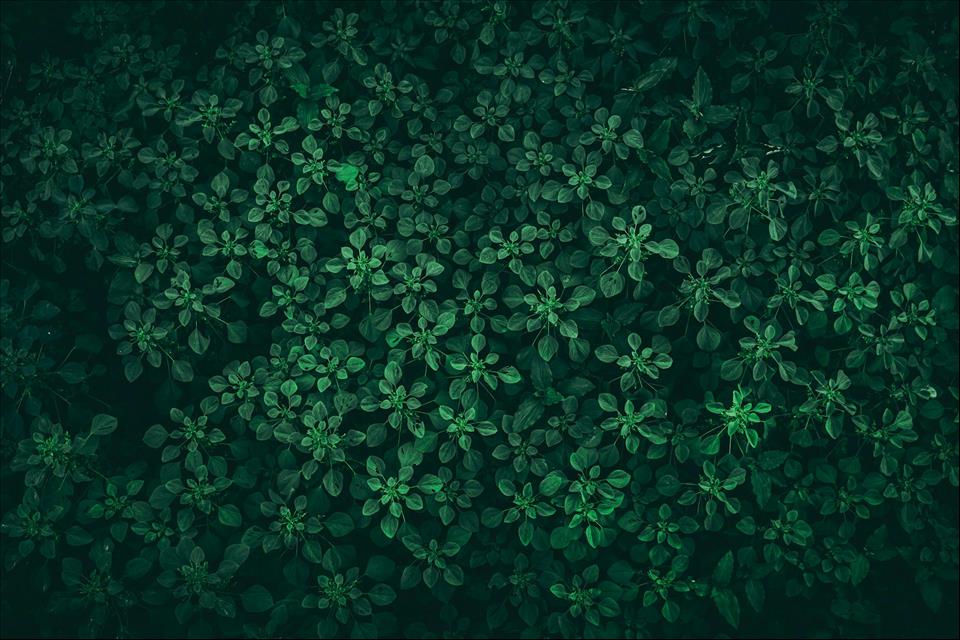
Plants Can Grow In Near-Darkness, New Research Shows Here Are Three Promising Benefits
They found that plants were able to perform photosynthesis – the process in which their leaves convert sunlight into energy – with very little light indeed. Not only did the microalgae carry out this process at the lowest light levels ever recorded (just 0.04 micromoles of photons m−2/s−1), this wasn't very far from what computer simulations predict to be the lowest light possible in any circumstances (0.01 micromoles of photons m−2/s−1).
To put this in context, typical light conditions outside on a clear day in Europe are between 1,500-2,000 micromoles of photons m−2/s−1 – that's more than 37,000-50,000 times the amount of light required by those Arctic microalgae. It is an amazing discovery that some plants are adapted to survive with so much less light.
Many people think of plants as nice-looking greens. Essential for clean air, yes, but simple organisms. A step change in research is shaking up the way scientists think about plants: they are far more complex and more like us than you might imagine. This blossoming field of science is too delightful to do it justice in one or two stories. This article is part of a series, Plant Curious , exploring scientific studies that challenge the way you view plantlife.
This discovery offers several exciting possibilities for the field of plant sciences:
1. Extended growing seasonsMany areas around the world receive too little sunlight because they are far from the equator and endure long winters, or are persistently covered by cloud. The UK is affected by cloud cover, for instance: in 2024 it is on the way to having one of the worst periods of total light hours since the 1900s (only the 1930s and early 1990s were worse).
Arctic wastelands may be more amenable to agriculture than previously believed. Andrei Stepanov
Now that we know how little light is required for photosynthesis, scientists could develop crops that require much less light to thrive in such places by learning from these Arctic microalgae. By unlocking their genetic potential, many crops could benefit by using plant breeding or biotech approaches to alter them accordingly.
In particular, this could help to eke more out of short growing seasons and increase food production. Even in a relatively southerly place like the UK, breeding plants that can photosynthesise with less light would potentially increase crop yields.
2. Sustainable agricultureThere could be additional benefits for growing plants indoors such as in greenhouses, polytunnels or vertical farms (where crops are grown in vertically stacked layers, such as racks of shelves). These systems sometimes rely on artificial lighting, which is both energy-intensive and costly.
If crops can be engineered to perform photosynthesis at lower light intensities – without compromising things like yield, taste or smell, the energy demand for artificial lighting could be reduced. This would reduce costs, a benefit that could be passed on to customers, and also help cut carbon emissions.
3. Space farmingPerhaps one of the most exciting prospects of this research is that it could potentially make it easier to grow plants in space . One of the main challenges for space missions to the Moon, Mars or eventually beyond, is how to feed anyone trying to live in those worlds for any length of time. Sunlight can be limited, so we'll need highly efficient ways of producing food that don't use much energy.
One of the challenges to cultivating crops in space is limited sunlight. Natali _ Mis
The discovery that photosynthesis can occur under such minimal light conditions suggests that crops could be grown either on other worlds or in spaceships using less energy to create light than previously thought. Combined with crops that are conducive to space conditions – spinach, lettuce and potatoes are among those that have been grown there before – this could be a critical step forward for long-term missions.
In short, this discovery is a promising breakthrough for the future. For those who sat through photosynthesis lessons in school and perhaps found it tedious, these new possibilities move it to a whole other galaxy.

Legal Disclaimer:
MENAFN provides the
information “as is” without warranty of any kind. We do not accept
any responsibility or liability for the accuracy, content, images,
videos, licenses, completeness, legality, or reliability of the information
contained in this article. If you have any complaints or copyright
issues related to this article, kindly contact the provider above.

















Comments
No comment